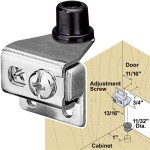How to Screen Mirror Windows 7 to TV
Screen mirroring allows users to display the content of a Windows 7 computer screen on a television. This can be useful for presentations, watching movies, or playing games on a larger display. Several methods exist for screen mirroring from Windows 7 to a TV, depending on the available hardware and network setup.
Using an HDMI Cable
A direct HDMI connection offers the simplest and most reliable screen mirroring solution. This method requires an HDMI port on both the computer and the television.
- Connect one end of the HDMI cable to the HDMI port on the computer.
- Connect the other end of the HDMI cable to the HDMI port on the television.
- Turn on the television and select the correct HDMI input source using the television remote.
- The computer screen should automatically be mirrored to the television. If not, adjust the display settings on the Windows 7 machine.
Using a Wireless Display Adapter
Wireless display adapters, such as those based on Miracast technology, offer a cable-free screen mirroring experience. These adapters plug into the HDMI port of the television and create a wireless network connection with the computer.
- Connect the wireless display adapter to the HDMI port of the television and power it on.
- On the Windows 7 computer, open the Devices and Printers control panel.
- Click "Add a device" and select the wireless display adapter from the list of available devices.
- Follow the on-screen instructions to complete the pairing process.
- The computer screen should now be mirrored to the television.
Utilizing DLNA/UPnP Streaming
DLNA (Digital Living Network Alliance) and UPnP (Universal Plug and Play) technologies enable media streaming from a Windows 7 computer to a compatible television or media player. This method doesn't mirror the entire desktop but allows sharing specific media files.
- Ensure both the Windows 7 computer and the television are connected to the same network.
- Enable media sharing on the Windows 7 computer through the Network and Sharing Center.
- Access media libraries on the television. The specific access method depends on the television's software.
- Select the desired media files from the shared libraries on the computer to play them on the television.
Using VGA Cable with Audio Cable
If the computer lacks an HDMI port but has a VGA port, users can employ a VGA cable for video transmission and a separate 3.5mm audio cable for sound.
- Connect one end of the VGA cable to the computer's VGA port and the other end to the television's VGA input.
- Connect one end of the 3.5mm audio cable to the computer's headphone jack and the other end to the television's audio input corresponding to the VGA input.
- Switch the television input to the VGA source.
- Configure the display settings on the Windows 7 computer to extend or duplicate the display to the television.
Troubleshooting Common Issues
Several issues can arise during the screen mirroring process. Here are some common troubleshooting steps:
- Ensure all cables are securely connected.
- Verify the television is set to the correct input source.
- Update the graphics drivers on the Windows 7 computer.
- Check for compatibility issues between the computer and the television or wireless display adapter.
- Restart both the computer and the television.
- If using a wireless connection, ensure the network is functioning correctly.
- Consult the user manuals for both the computer and the television for specific troubleshooting instructions.
Optimizing Screen Mirroring Performance
Several factors can influence the performance of screen mirroring. Optimizing these factors can improve the experience.
- Close unnecessary applications on the computer to free up system resources.
- Reduce the screen resolution on the computer if experiencing lag or delays.
- Ensure the wireless network has a strong signal if using a wireless display adapter.
- Minimize interference from other wireless devices operating on the same frequency.
Alternative Software Solutions
While the above methods are the most common, some third-party software solutions offer additional features and functionalities for screen mirroring.
- Research and select software that supports Windows 7 and the specific television or media player.
- Download and install the chosen software on the computer.
- Follow the software instructions to configure and initiate screen mirroring.
- Be aware that some software solutions may require a paid subscription or license.
Choosing the Right Method
The best screen mirroring method depends on individual requirements and available equipment. Consider the following factors when making a decision:
- Availability of ports on the computer and television (HDMI, VGA).
- Network setup and availability of a wireless network.
- Desired level of performance (wired connections generally offer better performance than wireless).
- Budgetary constraints.
- Technical expertise and comfort level with different technologies.

Miracast In Windows 7 Everything You Need To Know Driver Easy

Cast Screen From Windows 7 Os No Hw Required

Miracast In Windows 7 Everything You Need To Know Driver Easy

How To Hook Up A Windows 7 Computer Tv 12 Steps

Desktop Mirroring Or Extend Technology Services

How To Screen Mirror Stream Laptop Pc Tv Wireless No Adapters

Miracast On Windows 7 How To And Use Airdroid

Miracast On Windows 7 How To And Use Airdroid

Miracast On Windows 7 How To And Use Airdroid
Use Wireless Screen Mirroring To Display Your Windows 8 1 Computer On The Tv Sony Usa








